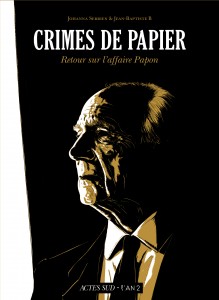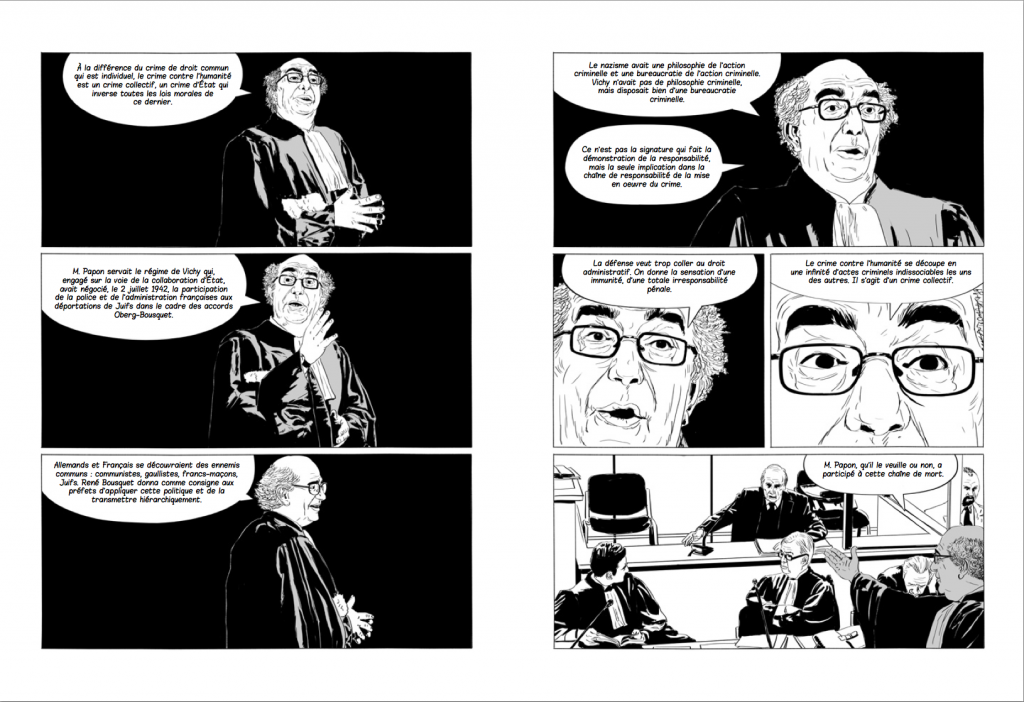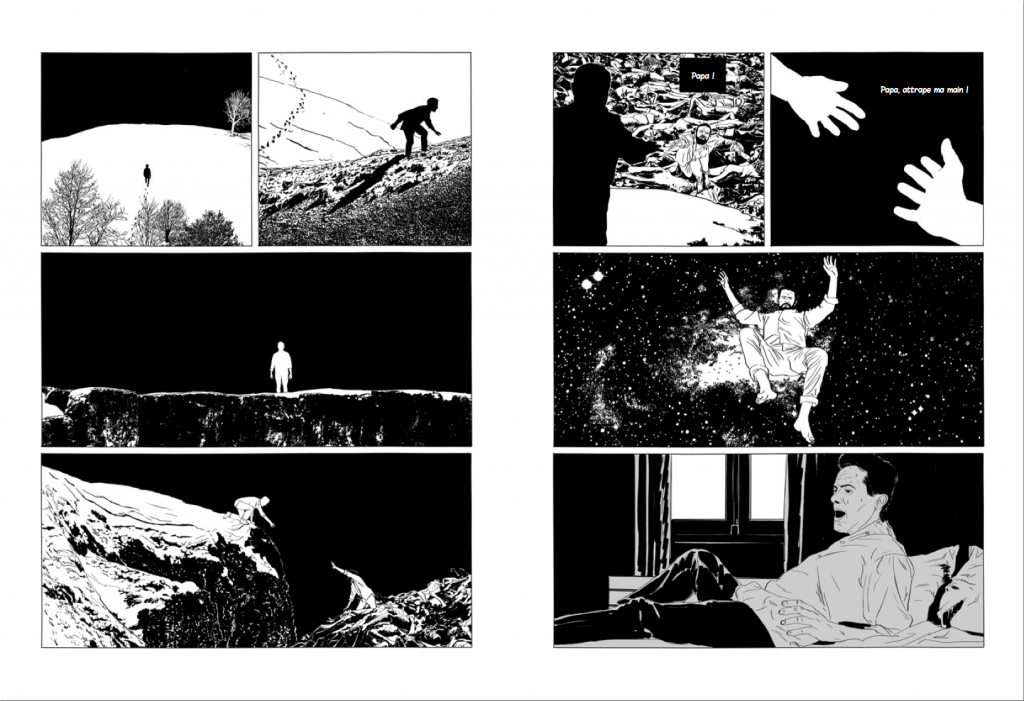Crimes de papier, retour sur l’affaire Papon, éditions Actes Sud/L’an 2
1942. Arthur Gribensky échappe à l’arrestation de sa famille près de Bordeaux. Après la guerre, il devient historien et n’a qu’un but en tête : retrouver celui qui a ordonné la déportation de ses parents.
En 1981, il dévoile par voie de presse les responsabilités de Maurice Papon pendant la guerre. C’est le début d’une longue procédure judiciaire qui aboutira à la condamnation de l’ex-secrétaire général de la préfecture de la Gironde en 1998.
L’histoire, fictive, s’inspire en grande partie du parcours de Michel Slitinsky, auteur du livre à charge contre Papon, « Le devoir de justice ». Michel Slitinsky, aujourd’hui décédé, a soutenu ce projet dès le début en m’apportant son expertise historique.
Maître Michel Zaoui, avocat de parties civiles durant le procès Papon, a également soutenu ce livre en acceptant d’en rédiger la préface.
Le scénario s’appuie sur un mémoire de Sciences Politiques réalisé sous la tutelle du philosophe Michel Terestchenko, dont le sujet était : « Le procès Papon et la mémoire française. »
La collaboration avec Jean-Baptiste Bertholom, graphiste et dessinateur a permis la parution de ce roman graphique en septembre 2012, aux éditions Actes Sud, collection l’An 2, dirigée par Thierry Groensteen.
Préface de Maître Zaoui
Lorsqu’il m’a été proposé d’introduire en quelques mots la bande dessinée ayant pour toile de fond l’affaire Papon, ma réaction a été plutôt négative. J’ai en effet travaillé pendant des années sur ce dossier en tant qu’avocat de parties civiles et je ne pouvais pas imaginer qu’une B.D. serait capable d’aborder les multiples problèmes soulevés par ce procès et par une personnalité aussi fuyante que celle de Maurice Papon. Pour moi, une telle approche ne pourrait aboutir qu’à une version simplificatrice de l’effroyable complexité que j’avais dû affronter jour après jour. Il me semblait impossible d’exposer à travers ce genre littéraire les questions capitales qui nous avaient tourmenté, mes confrères et moi-même : Pouvait-on juger un homme 50 ans après les faits ? Pouvait-on identifier un homme à un Régime ?Comment un tel homme avait-il pu être adoubé par le général De Gaulle ? La France était-elle un pays occupé ou un pays de résistants ? L’obéissance aux ordres pouvait-elle constituer une cause exonératoire de responsabilité ?
Et puis j’ai lu « Crimes de papier » et mes tranquilles certitudes concernant ce procédé narratif ont été quelque peu bousculées. Je me suis rendu compte que, par le biais d’une légère histoire d’amour fictive insérée dans la grande Histoire, l’auteure avait su saisir et restituer ce crime d’encre, ce crime de papier qui a livré des enfants, des femmes et des hommes à la chambre à gaz. Il ne suffit pas de dire que l’on ignorait cette mort certaine ; Papon a reconnu lui-même pendant le procès qu’il savait que les déportés allaient « vers un sort cruel »…
Même si l’on sait bien que le nazisme et sa folie meurtrière ne sont pas une invention française et que la France, il ne faut pas l’oublier, a subi le joug de la présence allemande sur son territoire, il n’en reste pas moins qu’il a fallu apprendre à « ouvrir les yeux » et finir par accepter qu’il a existé en France une « bureaucratie criminelle », le crime contre l’humanité n’étant pas réductible à la seule violence. C’était donc une gageure de présenter sous cette forme populaire et directe la terrible réalité de l’histoire française sous l’Occupation, de faire admettre sans l’édulcorer le fait que notre pays, par l’intermédiaire de certains de ses agents comme Maurice Papon, s’était rendu complice de crimes contre l’humanité. Le pari a été gagné.
Certes aujourd’hui, grâce à ce procès, les victimes ont enfin pu s’exprimer. Mais on sait bien que le temps passe et que bientôt il n’y aura plus personne pour témoigner. Seuls resteront les historiens qui travailleront sur tous les documents et sur tous les témoignages amassés durant ce qui fut le plus long procès qu’ait connu la France. Un livre comme celui-ci peut se lire comme l’une des pièces du puzzle que ne cesse de construire le récit historien. Car l’auteur a su, avec émotion et talent, transcrire le sérieux du procès Papon et ce qu’il a révélé de cette catastrophe du XXe siècle.
Michel Zaoui
Avocat au barreau de Paris
Avocat de parties civiles lors des procès Barbie, Touvier, Papon



